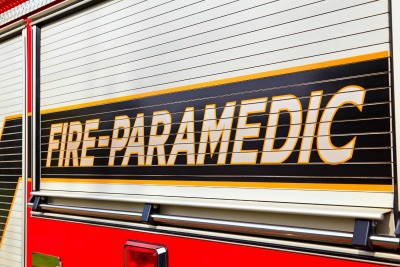
Features
Hot topics
Opinion
From the Floor: July 2015
We have all heard the saying, “If it ain’t broke, don’t fix it,” used in and around the emergency services. This saying dates back to the 1970s American government bureaucrats who implored the Carter administration to stop meddling in things that didn’t require fixing.
June 25, 2015
By Jay Shaw
 Many factors go into a municipality’s decision about its service model
Many factors go into a municipality’s decision about its service modelOrganizational change-management initiatives and philosophies are the kryptonite to this famous mantra. People in general don’t want change, even when change is necessary. Change is what I describe in some of my consulting lectures as one of the scariest words and or phrases in the world – that and income tax and cancer. Recently in Manitoba, another scary phrase – fire-EMS integration – enraged many across the emergency sector.
Some reporters have accused firefighters and paramedics of grandstanding, empire building and trying to promote their own initiatives. Everyone in the emergency services has their own opinions regarding the merits of a philosophy that has both succeeded and failed across North America. I’m not going to debate integrated systems since I, too, have an opinion based on my own knowledge and experiences. For Winnipeg Fire Paramedic Service, integration works and I like it. And while many say integration doesn’t work for them, Winnipeg continually answers phone calls from interested parties who want to explore and learn more.
Many factors go into a municipality’s decision about its service model. Service is the primary focus, and we should not have to remind each other of that. How you serve your customers may or may not be up to you, but deciding what goes into that service is a very complex proposition. First, a department needs to have a comprehensive understanding of its own unique relationships with its municipal, provincial and federal governments. The simple relationship between who provides and pays for what service in your region can have a major effect on the process of changing or staying the course. Secondly, a department must understand its community, listen to its stakeholders on all sides and ask tough questions. Everything from labour agreements to comprehensive hazard, risk and vulnerability assessments can impact how a municipality moves forward. Borders, rail line, demography, asset allocation mapping and political culture could all play a role in deciding what is best for customers.
What makes sense for your area may not work for a community 50 kilometres away. Logistics, staffing, resource allocation, cost sharing and comprehensive data analysis all need to be examined before a municipality makes a decision to put some or more paramedic gear on your fire truck or buy another ambulance.
And, informed decisions are not solely based on evidence from other agencies saying a particular service model works or doesn’t work. The information you collect may look like a juicy 20-ounce prime cut, grass-fed steak, but how are you going to sell that steak to a primarily vegan community? It does not matter what sauce you use to season it, the community will not buy what you are selling.
Decisions in a fire department should always go back to what serves its citizens – what they want and need. The hard part is determining the differences between want and need and choosing the right one. No one said this process was going to be easy. In some cases fixing what may or may not be broken is all about the lens through which you choose to look.
Learning more about your own community and exploring its needs through due diligence sounds like a simple solution, but it’s a scary process. No one can decide for you, and no one system of response will work for every department. However, I have a feeling that if folks examine the process a little deeper, words such as change and integration won’t be as scary or create so much controversy. Don’t be afraid to pick up the phone and give someone a call, because if it is broken and you don’t fix it, you are more likely to stir up controversy. Making no decision is in fact a decision as well.
Jay Shaw is a firefighter and primary-care paramedic with the City of Winnipeg, and an independent consultant focused on leadership, management, emergency preparedness and communication skills. jayshaw@mts.net @firecollege
Print this page